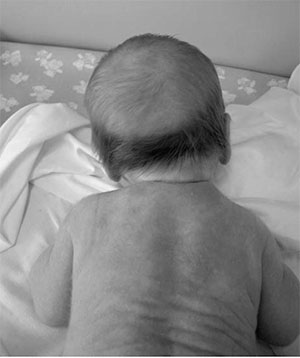Baby bald spot
SYMPTOMS
What is occipital alopecia in infants?
Occipital alopecia is a physiological phenomenon caused by hair replacement in babies. It commonly appears as a ring of sparse or missing hair on the back of the head where it contacts the bed in newborns a few months old.
The occurrence of occipital alopecia is related to the physiological shedding of baby hair. The shedding sequence of lanugo hair typically starts from the forehead and crown, then moves to the sides of the head, and finally reaches the occipital area. Infants begin this shedding process in the womb, and by 2–3 months after birth, it reaches the occipital region, resulting in occipital alopecia. However, some babies grow new hair while shedding their lanugo, making the alopecia less noticeable.
Note: Occipital alopecia does not cause discomfort in infants.

TREATMENT
How to relieve baby's occipital baldness?
Occipital baldness is a physiological phenomenon caused by hair replacement in infants and does not require medication. This condition usually disappears before the age of 1, and a few children may experience it until 2-3 years old.
DIAGNOSIS
When should you seek medical attention for baby's occipital alopecia?
Occipital alopecia is a physiological phenomenon caused by hair replacement in children and is not a disease, nor is it related to calcium deficiency. If there is only occipital alopecia without any other symptoms, there is no need to go to the hospital, let alone undergo blood tests, X-rays, or bone density checks.
If accompanied by abnormalities in teeth, nails, skin, height, or weight, or if there is noticeable hair loss in areas other than the back of the head or other abnormalities, it is advisable to seek medical attention.
POTENTIAL DISEASES
What are the possible causes of occipital alopecia in infants?
Occipital alopecia is a physiological phenomenon caused by hair replacement in infants, related to their natural hair shedding process. It is not associated with calcium deficiency, and friction between the back of the head and the bed due to sweating is not a primary factor but rather a contributing one.
Is occipital alopecia in infants a sign of calcium deficiency?
No, it is not due to calcium deficiency but rather a normal physiological hair shedding process.